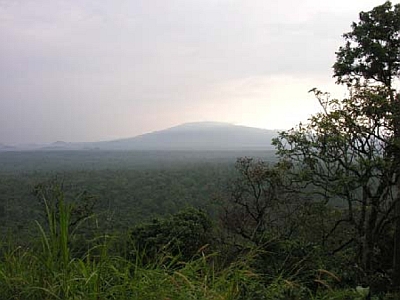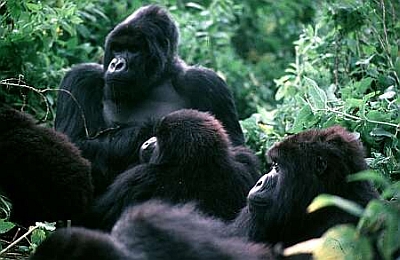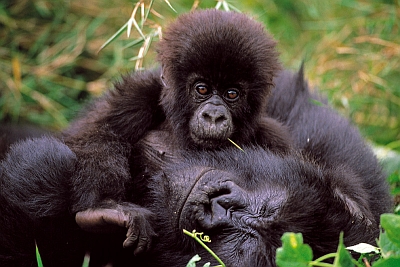Remote Sensing of Natural Heritage Sites
Virunga National Park (1/2)
Virunga National Park (covering an area of 790,000 ha) was the first national park created in Africa (Albert National Park, 1925). It is notable for its chain of active volcanoes and the greatest diversity of habitats of any park in Africa: from steppes, savannas and lava plains, swamps, lowland and Afromontane forests, to the unique Afroalpine vegetation and icefields of the Ruwenzori Mountains, which culminate in peaks above 5000m.
The site includes the spectacular Ruwenzori and Virunga Massifs, including Africa's two most active volcanoes. The great diversity of habitats harbours an exceptional biodiversity, including endemic as well as rare and globally endangered species, such as the mountain gorilla.
Because of it geological and ecological values the Virunga National Park was classified as a World Heritage Site in 1979.
Virunga National Park is home to the famous Mountain Gorilla (Gorilla beringei beringei), some 20,000 hippopotamuses that live in the rivers and birds from Siberia spending their winter in the warm climate.
Although mountain gorillas are now extremely rare and listed as one of the most critically-endangered species, successful conservation work has helped to secure the remaining populations. A last census finished in January 2009 showed that the number of mountain gorillas has risen by 12.5% and 81 gorillas were now living permanently inside the park.
For a long time the image most people had of a gorilla encounter included chest pounding, roaring, charging, and big, bared teeth. But researchers studying gorillas reveal a very different picture of mountain gorillas. The animals are peaceful, gentle, social and mainly vegetarian creatures.
The occasionally ferocious-looking, impressive displays are generally from a male gorilla protecting his family group from a threat. A typical group is led by the biggest and strongest mature male gorilla. He is called silverback because the hair on the male's back turns from black to silvery gray as he matures.
They spend much of their time eating. Their nutrition includes a variety of plants, along with a few insects and worms. At night the animals make a nest to sleep in. Many lightweight gorillas nest in trees, making bed of bent branches. Babies snuggle with their mothers for the night.
Life of a mountain gorilla isn't peaceful! They are endangered, threatened by civil war in a small area where they live. Hunters kill them for food or trophies.



